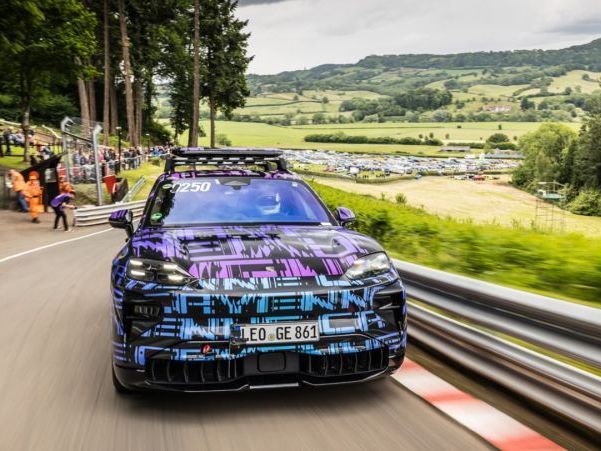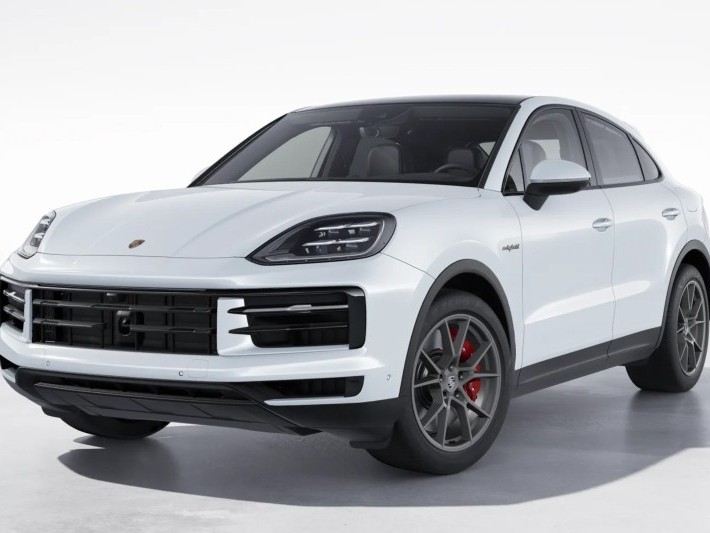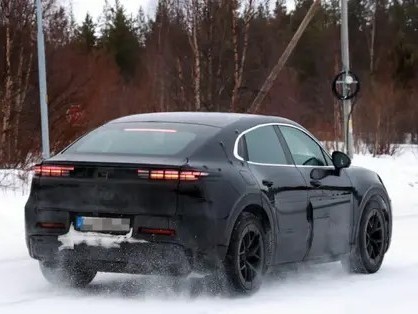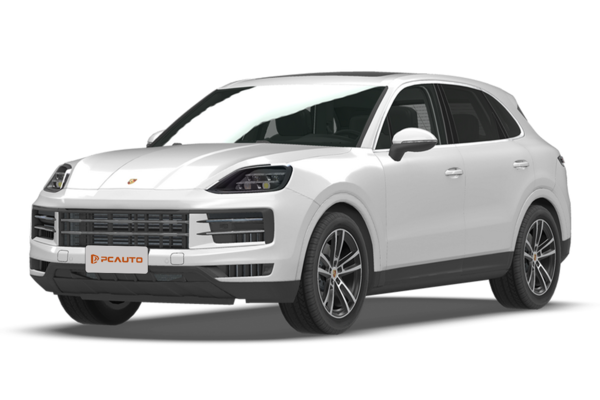Q
When did Porsche stop making Cayenne?
The Porsche Cayenne, the brand's luxury SUV, is still in production and going strong. The current iteration is the third generation (codenamed PO536), which received a mid - cycle refresh in 2023. This update brought with it a revised plug - in hybrid system and a brand - new interior design. In the Malaysian market, the Cayenne has long been a top pick among high - performance SUVs. Local buyers can choose from a variety of powertrains, including the 3.0T V6, 2.9T twin - turbo V6, and the range - topping 4.0T V8. For those who desire a sportier look, the Coupe variant is also available. Porsche is steadily ramping up its electrification efforts in Southeast Asia, and Malaysian customers should keep an eye on the Cayenne E - Hybrid. With an electric - only range of 80 kilometers (WLTP), it's well suited for daily city driving. Thanks to the Malaysian government's ongoing tax incentives for hybrid vehicles, these electrified versions are highly cost - effective. For the latest specs and pricing, it's always best to check directly with official Porsche channels.
Special Disclaimer: This content is published by users and does not represent the views or position of PCauto.
Related Q&A
Q
Is a Porsche Cayenne good for long drive?
The Porsche Cayenne stands out as a luxury SUV that truly excels on long drives, making it a perfect fit for Malaysia's roads and climate. Under the hood, its efficient turbocharged engine paired with the 8-speed Tiptronic S transmission delivers smooth power delivery and decent fuel economy, keeping things quiet and comfortable even when cruising at highway speeds. The standard air suspension system automatically adjusts damping based on road conditions, taking long-distance comfort up another notch.
What really helps on those extended journeys is the Cayenne's ergonomic seat design, which minimizes fatigue during hours behind the wheel. Throw in advanced driver assists like adaptive cruise control and lane-keeping, and it's clear this SUV is built to reduce the strain of long drives. For Malaysian drivers, the Cayenne's air-con system is a beast—blasting cold air fast enough to tackle our tropical heat with ease. The generous fuel tank also means fewer stops at the pump, which is a big plus on those highway stretches.
Space-wise, the Cayenne doesn't disappoint either. Rear legroom and boot capacity are class-leading, easily swallowing all the luggage for a family trip. If you're watching fuel costs, the hybrid variant ups the efficiency game even more. Sure, luxury car maintenance isn't cheap, but Porsche's service network in Malaysia is solid, giving owners peace of mind. All things considered, if you're someone who regularly hits the North-South Expressway, the Cayenne is definitely worth a spot on your shortlist.
Q
What engine is in the Cayenne 2025?
The 2025 Porsche Cayenne hits the Malaysian market with a solid lineup of powertrains to suit different tastes. There's the efficient 3.0-liter V6 turbo kicking out 353 horsepower, a beefier 2.9-liter V6 twin-turbo in the Cayenne S good for 474 horses, and at the top of the heap, the 4.0-liter V8 twin-turbo in the Cayenne Turbo GT that cranks out a whopping 631 hp. Then there are the plug-in hybrid options, like the Cayenne E-Hybrid, which pair either a 2.0-liter or 3.0-liter engine with an electric motor for a greener drive. These PHEVs offer around 40-60 km of all-electric range, making them pretty ideal for Malaysian city commutes. All these engines are mated to an 8-speed Tiptronic S transmission, ensuring smooth shifts and decent fuel economy. What's cool about Porsche's engine tech here is how it balances performance and efficiency. The V8, for example, uses cylinder deactivation, automatically switching to four-cylinder mode under light loads to save fuel. And the hybrids, of course, let you cruise on pure electric to cut down on emissions. For Malaysian buyers, it really comes down to daily needs. If you're often hitting the highway or crave that sporty feel, the V6 or V8 versions are the way to go. But if you're big on eco-friendliness and fuel efficiency, the hybrid models should be right up your alley.
Q
What is the battery in the Porsche Cayenne 2025?
The 2025 Porsche Cayenne is expected to come equipped with advanced lithium-ion battery packs, though exact specs will likely vary depending on the trim—think base, plug-in hybrid, or high-performance models. Your standard gas-powered Cayenne will stick with the tried-and-true 12V AGM battery, but the plug-in hybrid variants are where things get interesting, packing higher-voltage lithium-ion units to power that electric motor.
Now, a heads-up for Malaysian drivers: our tropical heat can be tough on batteries. The high temps tend to speed up electrolyte evaporation, so make it a habit to check your battery's condition regularly. And when it comes time for replacements, stick with Porsche OEM parts—trust me, compatibility is key here.
Porsche's smart energy management system is a solid plus too; it optimizes charging and discharging to help squeeze more life out of that battery. If you're eyeing the hybrid, expect a bump in all-electric range compared to the previous gen, but remember, real-world numbers will hinge on local road conditions and how you drive—stop-and-go city traffic versus highway cruising makes a big difference.
For battery care, avoid leaving the car parked for super long stretches until it's drained; that's a quick way to kill a battery. And don't sleep on those preventive checks at your Porsche service center—their diagnostic tools can catch issues before they turn into headaches. Keep these tips in mind, and your Cayenne's battery should stay in the game for the long haul.
Q
Will there be a 2025 Porsche Cayman?
From what we're hearing, Porsche is indeed gearing up to launch an all-new Cayman in 2025 as part of its broader electrification strategy. Word on the street is this new model will likely ditch the combustion engine in favor of a pure electric powertrain, staying true to the 718 lineage's sports car DNA while cranking up the performance and tech to meet global demand for high-performance electric sports cars.
For Malaysian enthusiasts, there's a good chance this EV Cayman will make its way here through official channels. However, we'll have to wait for Porsche Asia Pacific to confirm exact launch timings and local specifications.
What's really exciting is that Porsche isn't starting from scratch with EVs. They've already racked up plenty of experience with the Taycan and the upcoming electric Macan, so expectations are high for this electric Cayman – especially when it comes to range figures and fast-charging capabilities, which could be pretty impressive.
Malaysian buyers should keep an eye on updates from their local Porsche centers. It's also worth watching how government EV policies shape up – things like import tax breaks or improvements to charging infrastructure could have a real impact on both the car's final price tag and how practical it is to live with.
Q
What's the fastest 2025 Porsche?
The fastest Porsche model of 2025 is the all-new Taycan Turbo S. This pure electric sports car, armed with its potent dual-motor all-wheel-drive setup, cranks out a whopping 1,000 horsepower in overboost mode. It rockets from 0-100 km/h in a mere 2.3 seconds and tops out at 320 km/h, making it Porsche's quickest production car to date.
Under the skin, the Taycan Turbo S packs an advanced 800V high-voltage battery system. It's not just about brute force, though – this thing supports 270 kW fast charging, meaning you can get around 400 km of range in just 15 minutes. Perfect for those long hauls up and down Malaysia's North-South Expressway.
What's really impressive is how Porsche's EV tech innovation lets it deliver mind-blowing performance without sacrificing everyday usability. Take the adaptive air suspension, for example – it automatically adjusts to the road conditions, ensuring a comfortable ride no matter what Malaysian roads throw at it.
For speed-craving Malaysian Porsche fans, the Taycan Turbo S isn't just a statement of Porsche's performance prowess in the electric age; it's a glimpse into the future of supercars. And to sweeten the deal, Porsche Centre Malaysia offers exclusive charging networks and after-sales service, so owners can hit the road with total peace of mind.
Q
What's the cost of a 2025 Porsche?
Porsche hasn't officially announced their 2025 model prices for Malaysia just yet, but we can get a ballpark figure by looking at the 2024 lineup. For example, the entry-level Macan is expected to start around RM400,000, while the 911 Carrera will likely push north of RM900,000. Of course, the final number will dance around a bit depending on the specific trim, the options you tick, and even currency exchange rates.
Let's not forget, in Malaysia, imported car prices typically bundle in duties, sales tax, and registration fees – these can add a pretty penny to the sticker price. If you're seriously considering one, your best bet is to keep an eye on Porsche Malaysia's official website or hook up with an authorized dealer to get the most accurate quote.
Porsche's reputation is built on that legendary driving feel and top-notch interiors. Whether you're looking at the SUVs like the Cayenne and Macan, the iconic 911 sports cars, or even the all-electric Taycan, they all blend cutting-edge tech with that timeless Porsche design language. Malaysia's tropical weather and mixed road conditions can be tough on cars, but Porsche's all-wheel-drive systems and adaptive suspension setups handle it like a champ. Plus, their after-sales service network covers all the major cities, so you can have peace of mind knowing support is there when you need it.
Q
How much should I pay for a 2025 Porsche Cayenne?
Pricing for the 2025 Porsche Cayenne in Malaysia is expected to vary depending on configuration and optional extras. Looking at the current Cayenne, which starts roughly between RM600,000 and RM700,000 before any added options, the new model might see slight adjustments due to exchange rates, import duties, and equipment upgrades. Your best bet for the latest figures is to reach out directly to authorized Porsche dealers in Malaysia, like Porsche Centre Kuala Lumpur or Johor Bahru. With luxury cars, custom options—think wheels, interior materials, or driver assistance systems—can really swing the final price tag, so dealerships will have the most accurate breakdown for your build.
A big factor keeping Cayenne prices on the higher side in Malaysia is the import duty structure, which can add up to 30-50% to the car's cost when you factor in tariffs, consumption tax, and sales tax. If you're planning to hold onto your Cayenne for the long haul, it's worth checking out Porsche Malaysia's official warranty coverage—typically 5 years with unlimited mileage—and their service packages. These can be smart investments to help manage long-term maintenance costs.
Sure, rivals like the BMW X5 or Mercedes-Benz GLE might come in with slightly lower price tags in the Malaysian market, but Porsche's brand cachet and the sheer driving dynamics it delivers remain the Cayenne's stand-out strengths.
Q
What transmission is in the 2025 Porsche Cayenne?
The 2025 Porsche Cayenne offers Malaysian buyers a variety of transmission options, each tailored to specific models and powertrains. The base Cayenne and Cayenne S are expected to feature the refined 8-speed Tiptronic S automatic transmission, celebrated for its smooth shifts and quick reflexes—striking that perfect balance between daily comfort and spirited performance. Step up to the high-performance Cayenne Turbo GT, and you'll likely find the more aggressive 8-speed PDK dual-clutch gearbox under the hood, engineered specifically for handling massive torque and delivering lightning-fast shift times. For the plug-in hybrids, like the Cayenne E-Hybrid, Porsche fits an 8-speed automatic transmission specially tuned for the hybrid system, maximizing the synergy between electric and combustion power for optimal efficiency.
For Malaysian consumers, Porsche's transmission tech doesn't just prioritize driving thrills; it's also built to withstand our tropical climate. Think beefed-up cooling systems and enhanced sealing to keep things running smoothly when the mercury rises. If you're in the market, pick based on your driving style: the Tiptronic S is your go-to for relaxed, comfortable commutes, while the PDK will appeal to those craving that track-inspired edge. And regardless of which you choose, all transmissions come with Porsche's "Sport Response" mode, giving you an instant boost in power delivery—perfect for attacking Malaysia's twisty backroads or cruising confidently on the highway.
Q
What is the range of the 2025 Cayenne Hybrid?
The 2025 Cayenne Hybrid is expected to deliver an all-electric range of 60 to 80 kilometers, though actual figures may vary based on driving conditions, battery state, and vehicle specifications. This plug-in hybrid model pairs a 3.0-liter V6 turbocharged engine with an electric motor, churning out a combined system output of around 460 horsepower—making it equally adept at city commutes and longer journeys. For Malaysian buyers, its fuel efficiency translates to noticeable savings at the pump, especially handy for navigating traffic-heavy cities like Kuala Lumpur. What’s notable is that plug-in hybrids in Malaysia qualify for tax incentives, including import duty and sales tax exemptions, plus subsidies for home charging installation. If you’re mostly doing short trips, lean into electric mode to maximize savings, and keeping up with high-voltage battery maintenance will help extend its lifespan. These luxury plug-in hybrid SUVs hold up well in tropical climates, but it’s wise to keep the battery around 50% charge if you’re leaving it parked for extended periods.
Q
What is the 2025 Porsche line?
Porsche's 2025 lineup is set to double down on its high-performance and luxury roots while ramping up its electrification game. Malaysian fans, listen up – the Taycan EV range is getting a mid-cycle refresh, and word on the street is it might pack upgraded battery tech to push range beyond 700 km, along with tweaks to its 800V fast-charging capabilities. The new Cayenne and Macan lines are getting updates too; the Macan EV, Porsche's first all-electric SUV, will feature a dual-motor AWD setup. Even the gas-powered 911 is likely getting a mild-hybrid system to keep up with those ever-tightening emissions norms.
Given Malaysia's sweltering heat, expect the entire range to come standard with beefed-up cooling systems. And here's something that might pique your interest: locally assembled (CKD) Macan or Cayenne models could land with more competitive price tags.
Porsche's also not sitting idle on the charging front in Southeast Asia. Teaming up with Malaysia's 2030 new energy goals, we might see more right-hand-drive EVs hitting our shores. The all-electric 718 Boxster prototype's already in testing, which is a clear sign the brand's electrification push is shifting into high gear.
Popular Cars
Model Year
Car Compare
Car Photo
Latest Q&A
Q
How much is the 2024 Vanquish?
The specific selling price of the 2024 Aston Martin Vanquish has not been officially announced yet, but based on the market positioning of the previous generation model and supercars in the same class, the starting price is expected to be between RM1.5 million and RM2 million, and the specific price will fluctuate depending on optional configurations and tax rates. As Aston Martin's flagship GT sports car, Vanquish is typically equipped with a V12 engine with a power output of over 600 horsepower, and features a carbon fiber structure and luxurious handmade interior that balances performance and comfort. It should be noted that these high-end sports cars often require advance booking and long delivery cycles. It is recommended to directly contact authorized dealers for the latest information, including customization options and financial solutions. In the same price range, models such as Ferrari Roma or Bentley Continental GT can also be considered, each with its own characteristics. For example, Roma leans more towards sporty handling, while Continental GT emphasizes luxury travel experience, and consumers can choose according to their own needs.
Q
What engine is in the Vanquish 2024?
The 2024 Vanquish is expected to pack a fortified 5.2-liter V12 twin-turbocharged engine, sourced from Aston Martin’s flagship powertrain lineup. With power likely bumped to around 700 horsepower and torque peaking at 800 Nm, it’s paired with an 8-speed automatic transmission—balancing blistering performance with seamless shifts.
The aluminum block and twin-scroll turbos keep weight in check while sharpening throttle response, and cylinder deactivation helps with fuel efficiency when you’re not chasing the horizon. As Aston’s GT flagship, the Vanquish’s tuning prioritizes low-end grunt, making it equally at home on cross-country hauls or twisty mountain passes.
Worth noting: these big-displacement turbo engines handle tropical climates with ease, thanks to cooling systems specifically tweaked for high-temperature resilience—critical when pushing hard. For those craving extra edge, optional carbon-ceramic brakes and rear-wheel steering dial up the agility, ensuring composure even when the roads get unpredictable.
Q
What does a 2024 Aston Martin cost?
The 2024 Aston Martin lineup sees significant price variations depending on model and specifications. The entry-level Vantage starts at approximately RM1 to 1.2 million, while the DB12 ranges between RM1.5 to 1.8 million. Flagship performers like the DBS 770 Ultimate or limited-run Valhalla can easily surpass RM3 million. These figures typically cover base configurations, though costs rise with optional performance packs, bespoke interiors, or specialty paintwork.
As a handcrafted British luxury marque, Aston Martins feature either uprated 4.0L V8 twin-turbo or 5.2L V12 powertrains, paired with cutting-edge tech like intelligent suspension and digital cockpits. Buyers should consult authorized dealers for exact configurations—the brand’s personalization program allows extensive customization of materials and finishes.
Pro tip: Factor in elevated insurance and maintenance costs. These high-performance machines follow specialized service schedules, so review aftersales policies beforehand. Always confirm final pricing with your dealer, as options dramatically impact the bottom line.
Q
How much is the 2024 Aston Martin Vanquish?
The specific selling price of the 2024 Aston Martin Vanquish has not yet been officially announced by the official, but based on the pricing strategy of the previous generation model and brand, it is expected that the starting price will remain in the range of 300000 to 400000 US dollars, and the specific price will be adjusted according to optional configurations and exchange rate fluctuations. As the flagship GT sports car of the brand, Vanquish continues the classic British design language, equipped with an enhanced V12 engine with a maximum power of over 600 horsepower, and equipped with a new generation of adaptive suspension and carbon fiber body technology, achieving a balance between luxury and performance. It is worth noting that these ultra luxury models are usually produced on an order basis with a long delivery cycle. It is recommended to obtain customized quotes through authorized dealers. Competitors in the same class include Ferrari Roma and Bentley Continental GT, but Vanquish emphasizes the combination of long-distance comfort and driving pleasure. Its iconic grille design and hand sewn interior craftsmanship also continue the brand's unique recognition.
Q
Does the 2019 Kia Cerato have Apple CarPlay?
The 2019 Kia Cerato did come equipped with Apple CarPlay, which was a pretty standard tech feature for its class at the time. It lets you mirror your iPhone’s navigation, music, and calls onto the car’s display via USB—handy for keeping things safe and convenient on the road. Android Auto was also onboard, so it covered both major phone ecosystems. The 8-inch touchscreen was responsive, with a clean interface that made it easy to use.
Just a heads-up: for the best CarPlay experience, make sure your iPhone’s OS is compatible and use an original cable. Back in 2019, rivals like the Toyota Corolla and Honda Civic offered similar tech, but the Cerato stood out for its value, especially if you wanted solid features without overspending. If you run into any hiccups with CarPlay, the owner’s manual or a dealership visit should sort you out.
View MoreRelated News

Porsche launches wireless charging technology, while Tesla announces the cancellation of Cybertruck-related development
MichaelSep 11, 2025

Porsche Cayenne EV will offer wireless charging functionality, eliminating the need for heavy charging cables
JamesSep 5, 2025

Porsche Tests Second-Gen Cayenne Electric, Aims to Rival Model X
JohnJul 16, 2025

Porsche Cayenne: Redefining Practicality with Spaciousness and Versatility
RobertMay 12, 2025

Porsche is about to launch an electric version of Cayenne, spy shots of the Swedish test have been exposed
AshleyApr 2, 2025
View More

















Pros
Cons